Akt inhibition promotes autophagy and sensitizes PTEN-null tumors to lysosomotropic agents
- PMID: 18838554
- PMCID: PMC2557046
- DOI: 10.1083/jcb.200801099
Akt inhibition promotes autophagy and sensitizes PTEN-null tumors to lysosomotropic agents
Abstract
Although Akt is known as a survival kinase, inhibitors of the phosphatidylinositol 3-kinase (PI3K)-Akt pathway do not always induce substantial apoptosis. We show that silencing Akt1 alone, or any combination of Akt isoforms, can suppress the growth of tumors established from phosphatase and tensin homologue-null human cancer cells. Although these findings indicate that Akt is essential for tumor maintenance, most tumors eventually rebound. Akt knockdown or inactivation with small molecule inhibitors did not induce significant apoptosis but rather markedly increased autophagy. Further treatment with the lysosomotropic agent chloroquine caused accumulation of abnormal autophagolysosomes and reactive oxygen species, leading to accelerated cell death in vitro and complete tumor remission in vivo. Cell death was also promoted when Akt inhibition was combined with the vacuolar H(+)-adenosine triphosphatase inhibitor bafilomycin A1 or with cathepsin inhibition. These results suggest that blocking lysosomal degradation can be detrimental to cancer cell survival when autophagy is activated, providing rationale for a new therapeutic approach to enhancing the anticancer efficacy of PI3K-Akt pathway inhibition.
Figures
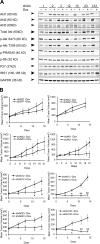
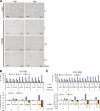
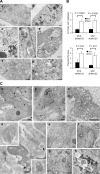
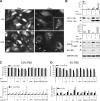
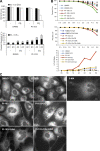
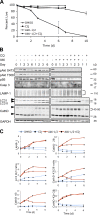
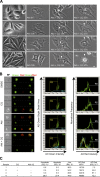

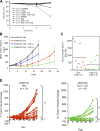
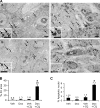
Similar articles
-
Blocked autophagy using lysosomotropic agents sensitizes resistant prostate tumor cells to the novel Akt inhibitor AZD5363.Clin Cancer Res. 2013 Feb 15;19(4):833-44. doi: 10.1158/1078-0432.CCR-12-3114. Epub 2012 Dec 20. Clin Cancer Res. 2013. PMID: 23258740
-
Akt and autophagy cooperate to promote survival of drug-resistant glioma.Sci Signal. 2010 Nov 9;3(147):ra81. doi: 10.1126/scisignal.2001017. Sci Signal. 2010. PMID: 21062993 Free PMC article.
-
Pro-apoptotic and pro-autophagic effects of the Aurora kinase A inhibitor alisertib (MLN8237) on human osteosarcoma U-2 OS and MG-63 cells through the activation of mitochondria-mediated pathway and inhibition of p38 MAPK/PI3K/Akt/mTOR signaling pathway.Drug Des Devel Ther. 2015 Mar 12;9:1555-84. doi: 10.2147/DDDT.S74197. eCollection 2015. Drug Des Devel Ther. 2015. PMID: 25792811 Free PMC article.
-
Enhancing perifosine's anticancer efficacy by preventing autophagy.Autophagy. 2010 Jan;6(1):184-5. doi: 10.4161/auto.6.1.10816. Epub 2010 Jan 1. Autophagy. 2010. PMID: 20023422 Review.
-
Autophagy, bafilomycin and cell death: the "a-B-cs" of plecomacrolide-induced neuroprotection.Autophagy. 2006 Jul-Sep;2(3):228-30. doi: 10.4161/auto.2703. Epub 2006 Jul 16. Autophagy. 2006. PMID: 16874105 Review.
Cited by
-
ENDOLUNG trial. A phase 1/2 study of the Akt/mTOR inhibitor and autophagy inducer Ibrilatazar (ABTL0812) in combination with paclitaxel/carboplatin in patients with advanced/recurrent endometrial cancer.BMC Cancer. 2024 Jul 22;24(1):876. doi: 10.1186/s12885-024-12501-5. BMC Cancer. 2024. PMID: 39039449 Free PMC article. Clinical Trial.
-
Pharmacology Progresses and Applications of Chloroquine in Cancer Therapy.Int J Nanomedicine. 2024 Jul 5;19:6777-6809. doi: 10.2147/IJN.S458910. eCollection 2024. Int J Nanomedicine. 2024. PMID: 38983131 Free PMC article. Review.
-
Anticancer Effects of Mitoquinone via Cell Cycle Arrest and Apoptosis in Canine Mammary Gland Tumor Cells.Int J Mol Sci. 2024 Apr 30;25(9):4923. doi: 10.3390/ijms25094923. Int J Mol Sci. 2024. PMID: 38732133 Free PMC article.
-
Sulindac selectively induces autophagic apoptosis of GABAergic neurons and alters motor behaviour in zebrafish.Nat Commun. 2023 Sep 2;14(1):5351. doi: 10.1038/s41467-023-41114-y. Nat Commun. 2023. PMID: 37660128 Free PMC article.
-
Inhibition of autophagy and induction of glioblastoma cell death by NEO214, a perillyl alcohol-rolipram conjugate.Autophagy. 2023 Dec;19(12):3169-3188. doi: 10.1080/15548627.2023.2242696. Epub 2023 Aug 6. Autophagy. 2023. PMID: 37545052 Free PMC article.
References
-
- Altomare, D.A., and J.R. Testa. 2005. Perturbations of the AKT signaling pathway in human cancer. Oncogene. 24:7455–7464. - PubMed
-
- Arico, S., A. Petiot, C. Bauvy, P.F. Dubbelhuis, A.J. Meijer, P. Codogno, and E. Ogier-Denis. 2001. The tumor suppressor PTEN positively regulates macroautophagy by inhibiting the phosphatidylinositol 3-kinase/protein kinase B pathway. J. Biol. Chem. 276:35243–35246. - PubMed
MeSH terms
Substances
LinkOut - more resources
Full Text Sources
Other Literature Sources
Molecular Biology Databases
Research Materials
Miscellaneous

